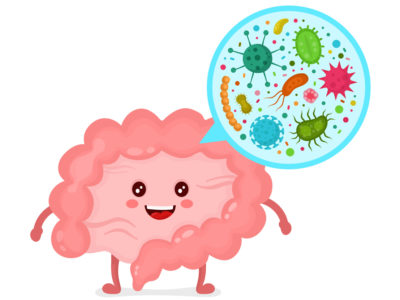Irritable guts can feel like a death sentence — you never seem to get the formula right. Eating out is a nightmare, providing friends and family with dietary restrictions can make you feel like a burden, and your roster of acceptable foods grows shorter with every article you read and doctor’s appointment you have.
Today, we’re going to look into a specific diet designed for those with irritable bowel syndrome (IBS).
FODMAP stands for Fermentable Oligosaccharides, Disaccharides, Monosaccharides, and Polyols.
People with touchy bowels, leaky gut, or diagnosed IBS should be avoiding foods that fall within those parameters — why?
They’re all short chain carbohydrates and sugar alcohols. Those carbs specifically trigger bloating, stomach pain, and bad gas.
The body naturally sloughs those foods through the digestive tract without absorbing them. However, people with digestive issues are particularly aggravated by these fermentable carbs.
So following a low FODMAP diet tends to reduce the painful symptoms of those without fully functioning guts.
It’s important to note, though, that if you don’t suffer from digestive issues like IBS, this diet can actually restrict you in other ways. A lot of the FODMAP foods are prebiotics which support the population of good gut bacteria.
How to Use a Low FODMAP Diet
First of all — if you have IBS, and you’re not following first-line advice (avoid alcohol, caffeine, spicy food, etc.), do that before you do anything else.
If you have tried that, let’s move on.
In the first phase of a low FODMAP diet, the avoidance of FODMAP foods is much more severe. For two-six weeks, do not eat:
- Artichokes, asparagus, cauliflower, garlic, green peas, mushrooms, onions, and sugar snap peas
- Apples, apple juice, cherries, dried fruit, mangoes, nectarines, peaches, pears, plums, and watermelons
- Cow’s milk, custard, evaporated milk, ice cream, soy milk, sweetened condensed milk, and yogurt
- Most legumes, some marinated meats/poultry/seafood, most processed meats
- Wheat/rye/barley breads, breakfast cereals, and biscuits
- High fructose corn syrup, honey, sugar-free replacements
- Cashews and pistachios.
That may seem like a list containing all food in the world.
But here’s what you can eat instead…
- Eggplants, green beans, bok choy, bell peppers, carrots, cucumbers, lettuce, potatoes, tomatoes, and zucchini
- Cantaloupe, grapes, kiwi fruit, mandarin, oranges, pineapples, and strawberries
- Almond milk, brie or camembert, feta, hard cheese, and lactose-free milk
- Eggs, firm tofu, plain-cooked meats/poultry/seafood, and tempeh
- Corn flakes, oats, quinoa/rice/corn pasta, rice cakes, and sourdough spelt bread
- Dark chocolate, maple syrup, rice malt syrup, and table sugar
- Macadamias, peanuts, pumpkin seeds, and walnuts
Now, remember, these foods aren’t evil. In fact, in people with healthy guts, a lot of them are recommended and healthy (legumes and wheat breads included.)
After the two-six week restriction period, the idea is to ease your way back in to find out which of these FODMAP foods really irritates you.
Not everyone finds every food intolerable.
So… test them. For three days each, reintroduce high FODMAP foods one at a time and pay attention to how your body reacts. (This is the second phase.)
You should still be eating low FODMAP during this time.
In phase three, once you’ve gotten a better idea of what is irritating your system, you can restrict those foods and not every artichoke and pistachio you see.
How to Execute
Once you’ve personalized your low FODMAP diet — whether you’ve determined that all or most of those foods cause your digestive system distress or if it’s maybe just five or six that are causing the problems —it’s time to prepare.
Three steps:
- Meal plan.
- Grocery shop.
- Maintain your will power.
As you’re getting used to the low FODMAP diet, try to avoid eating out. Find exciting ways to prepare the foods that are available to you! The internet is a treasure trove.
Get rid of the high FODMAP foods in your house so you aren’t tempted.
And when you’re ready to eat out again… make sure that you check the menus in advance and see what’s available for you.
And in tomorrow’s issue…
We’ll explain exactly why these foods don’t jive well with an IBS-ridden gut.
You May Also Like…




